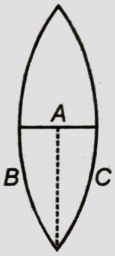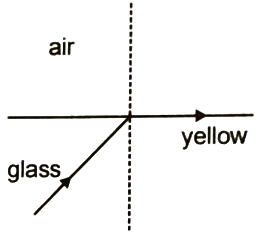Two thin convex lenses of focal length 20cm and 5cm are placed 10cm apart. The power of the combination of lenses is
1. 10D
2. 15D
3. 20D
4. 25D
The maximum magnification which can be obtained with the help of a simple microscope is 6. If a point object is placed at distance 3 cm from the microscope, then what was be the position of the image?
(1) -7.5 cm
(2) -6.4 cm
(3) 8.2 cm
(4) 5.45 cm
A converging spherical wavefront is obtained from
(1) Light emerging from a convex lens when a point source is placed at its focus
(2) A parallel beam of light incident on the convex lens
(3) Light converging at a point
(4) Both (2) & (3)
A ray is incident normally on a right-angled prism whose R.I is and prism angle . Deviation to the ray is equal to
(1)
(2)
(3)
(4) 2
Two convex lenses of focal lengths are separated co-axially by a distance d. The power of the combination will be zero if d equals to
1.
2.
3.
4.
A thin equiconvex lens of power P is cut into three parts A, B, and C as shown in the figure. If are powers of the three parts respectively, then

1.
2.
3.
4.
A light beam containing red, yellow and blue color, falls on the interface of glass-air as
shown. If the yellow light is just totally internally reflected then emergent ray in air contain

1. Both red and blue color
2. Only red color
3. Only blue color
4. No color
An astronomical telescope has angular magnification of \(40\) in its normal adjustment. If focal length of eyepiece is \(5\) cm, the length of the telescope is:
1. \(190\) cm
2. \(200\) cm
3. \(205\) cm
4. \(210\) cm
A convex lens forms the image of an object of the same magnification when the object is placed at 10 cm and 20 cm from the lens. The focal length of the lens is:
(1) 5 cm
(2) 15 cm
(3) 25 cm
(4) 30 cm
A, B, and C are three optical media of respective critical angles . Total internal reflection of light can occur from A to B and also from B to C but not from C to A, then the correct relation between critical angles is
1.
2.
3.
4.






